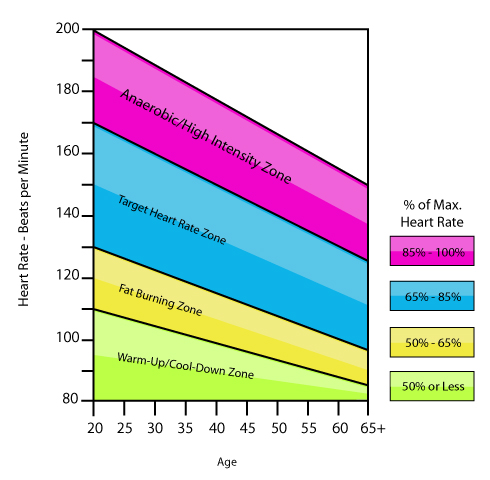How to Use Your Heart Rate to Gauge Exercise Intensity

Dig out your calculator, a piece of paper and a pencil… It’s time to do some math to figure out how to use your heart rate to gauge exercise intensity!
Step 1: Find Your Maximum Heart Rate
To calculate your maximum heart rate, subtract your age from 220.
220 – (your age) = your maximum heart rate
Example: If you’re 30 years old, your maximum heart rate is 190 beats per minute (bpm)
Step 2: Determine Your Goal Intensity
There are three levels of exercise intensity: light, medium and intense. Each level has a heart rate range as listed below:
Light – 40-50% of maximum heart rate
Moderate – 50-70% of maximum heart rate
Intense – 70-85% of maximum heart rate
You can figure out your personal range mathematically by multiplying your maximum heart rate by the highest and lowest percentage of the range. Or, you can skip all that work and use a handy-dandy chart like this:
Step 3: Take Your Pulse
Heart rate monitors are readily available and prices start around $15. But if you don’t have one, don’t worry! All you need is a clock or stopwatch and you can figure out your heart rate yourself.
First, find the pulse on your wrist or on your carotid artery on your neck (to the right or left of your trachea), then count your heart beat for 10 seconds. Once you have that number, multiply it by 6 to get your beats per minute.
Example: If you counted 25 beats, then your heart rate is 150 bpm
Don’t let the math scare you! These are just some tools to help you gauge your exercise more accurately but the most important thing is to listen to what your body tells you. There are so many ways to make movement a part of your life. Synergy offers Feldenkrais® classes to help you make the transition into a more active way of life. Unfortunately, injuries can happen and Synergy’s staff of physical therapists and occupational therapists are here to get you back in the game.



